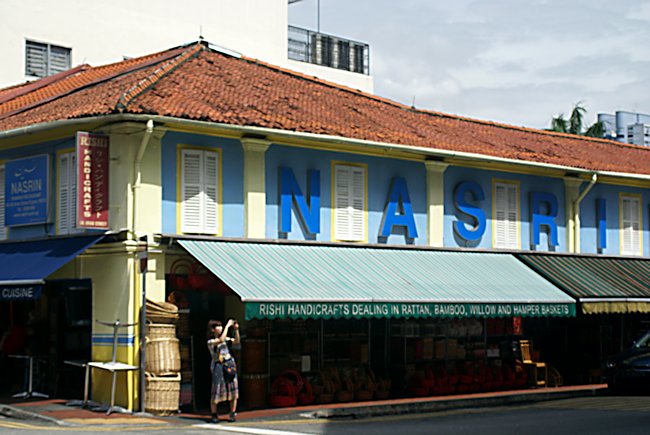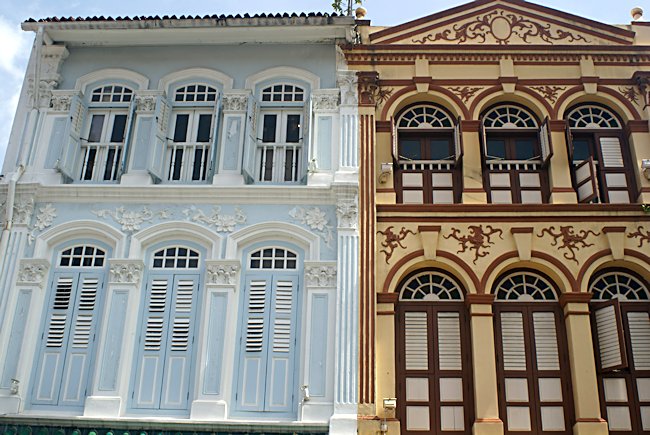Singapore's charming Merchant Colonial Architecture
Look hard and you will see the past. When you look around the streets of Little India and the Muslim quarter around Arab street stop and look up.

Do not look what's on sale in the shops. Have a look at the Colonial architecture. Some of these buildings are over 200 years old. If you can disregard the modern trappings you can get a glimpse of what Singapore used to look like.
Living and doing business in a tropical climate has its particular problems. Air conditioning had not been invented when Sir Stamford Raffles setup the trading city state of Singapore. The buildings needed large windows that could be opened to allow cooling breezes to flow through the buildings rooms. At night it was desirable to leave the windows open, but to stop bugs and intruders coming in wooden shutters were added to each window.
They became a feature of Singapore's architecture. At night the shutters could be closed but the windows left open. The vents in the shutters would allow the air still to come into the rooms. The vents were angled away from the room that even if there was a cloudburst rain would not coming in to the building.

The merchants built houses with their shops underneath. The entrance of the shops were built about 2 yards back from the building line. This enabled a protective colonnade to be included into the design. This provided cover for the customer from the monsoon downpours and the hot tropical sun. The early buildings were only two stories high. You can still see some of those around the back streets. As merchants became more prosperous, they built an extra set of rooms on top of the living quarters above their shop. These were sometimes store rooms, servants quarters or extra rooms for the family.
The architects employed an optical illusion technique that was prevalent in Europe. The idea was to make people in the street, looking up at the building, think that it was taller than it really was. They did this by building windows of exactly the same style as the ones in the floor below, but make them smaller. The more prosperous merchants used attractive plaster stucco work to decorate the outside of their buildings and give them a European feel.
Travel books

